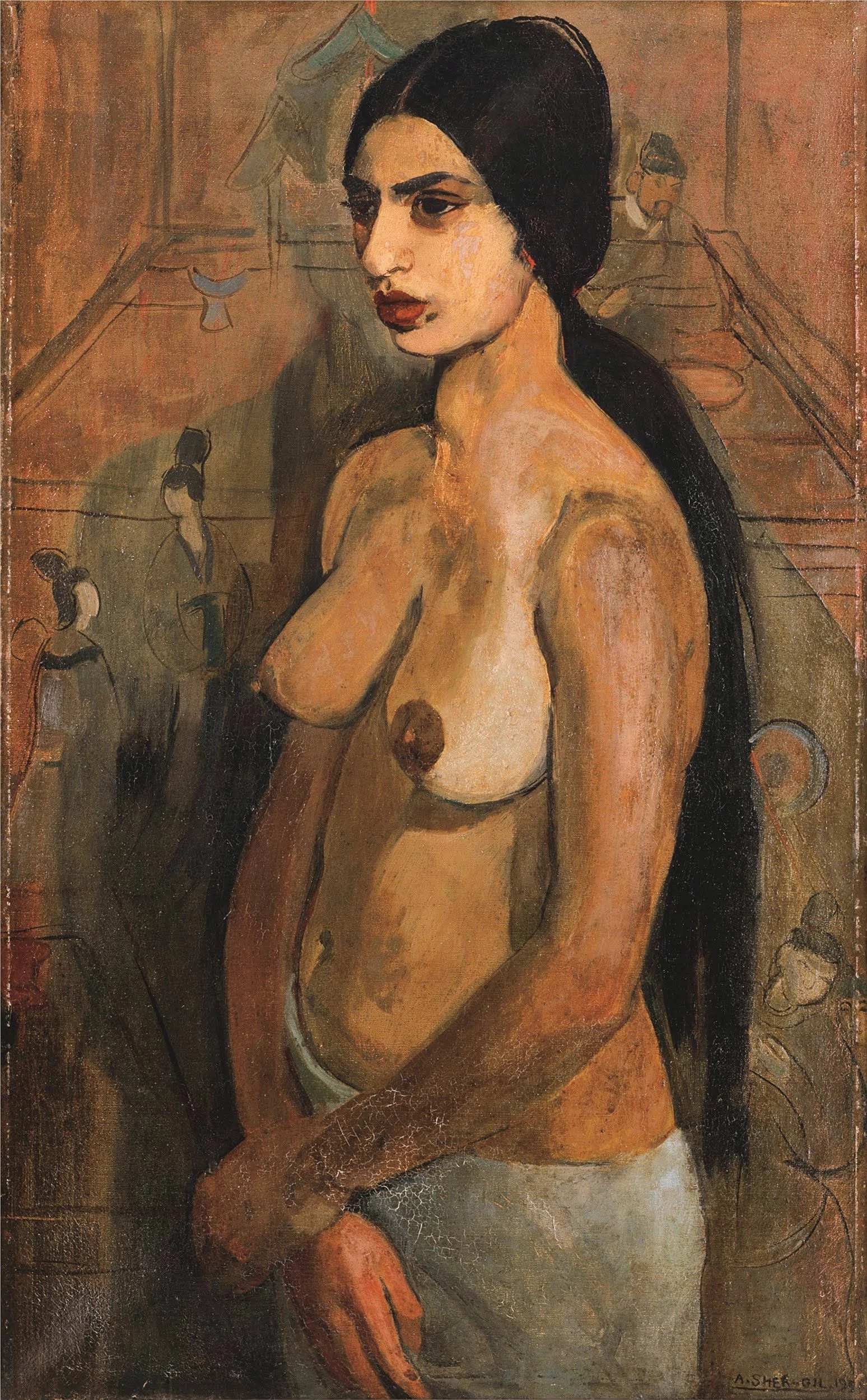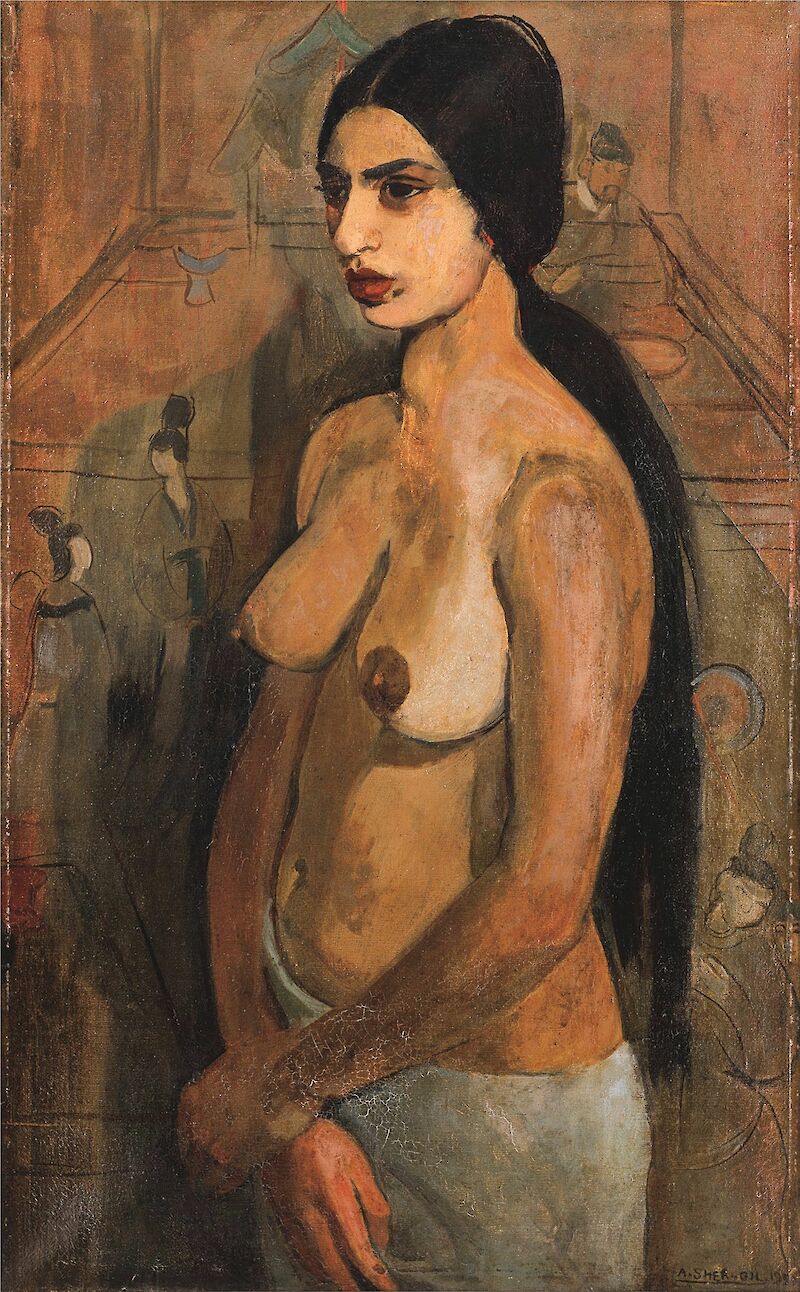


At age 16, Amrita Sher-Gil was admitted to the prestigious French art college Ecole Nationale des Beaux Arts, and moved from her home in Hungary to Paris. Sher-Gil spent five years in Paris, evolving her academic style into something darker and more expressive, and soaking in the rich artistic lineage of the city. In particular, Paul Gauguin’s paintings of Tahitian women in a malaise of languid nudity seemed to have a particular impact on her. Sher-Gil was part Hungarian and part Sikh, and in Paris in the 1930s—a fully ‘exotic’ beauty.
Sher-Gil painted Self-Portrait as a Tahitian when she was 21, a clear nod to Gauguin’s idealized nudes. But while a surface-level reading of this image describes a young artist learning through imitation of a master, a closer look reveals Sher-Gil’s self-portrait as a direct confrontation of the old painter. Gauguin’s nude subjects acknowledge their viewer, presenting their bodies for observation, or in the case of the artist, for exploitation.
In her self-portrait, Sher-Gil stands alert and focused. Her attention is off-canvas, brows knit in concentration. In a lecture on the piece, Saloni Mathur, Professor of Art History at UCLA and author of India by Design: Colonial History and Cultural Display called out two notable, if subtle details. Gauguin set his subjects in paradise, Sher-Gil stands in a shallow, uncomfortable space where the “semiotics of desire are suffocated.” Mathur also caught a detail that all but the most attentive viewers might miss—that a human shadow is visible over Sher-Gil’s stomach and breasts. Is it the viewer’s shadow? Gauguin’s?
As a non-white, female artist in Paris, Sher-Gil knew that she was an oddity, an observed exotic other, and in this portrait she deftly acknowledges this gaze, and ignores it.
...
Got questions, comments or corrections about Self-Portrait as a Tahitian? Join the conversation in our Discord, and if you enjoy content like this, consider becoming a member for exclusive essays, downloadables, and discounts in the Obelisk Store.
